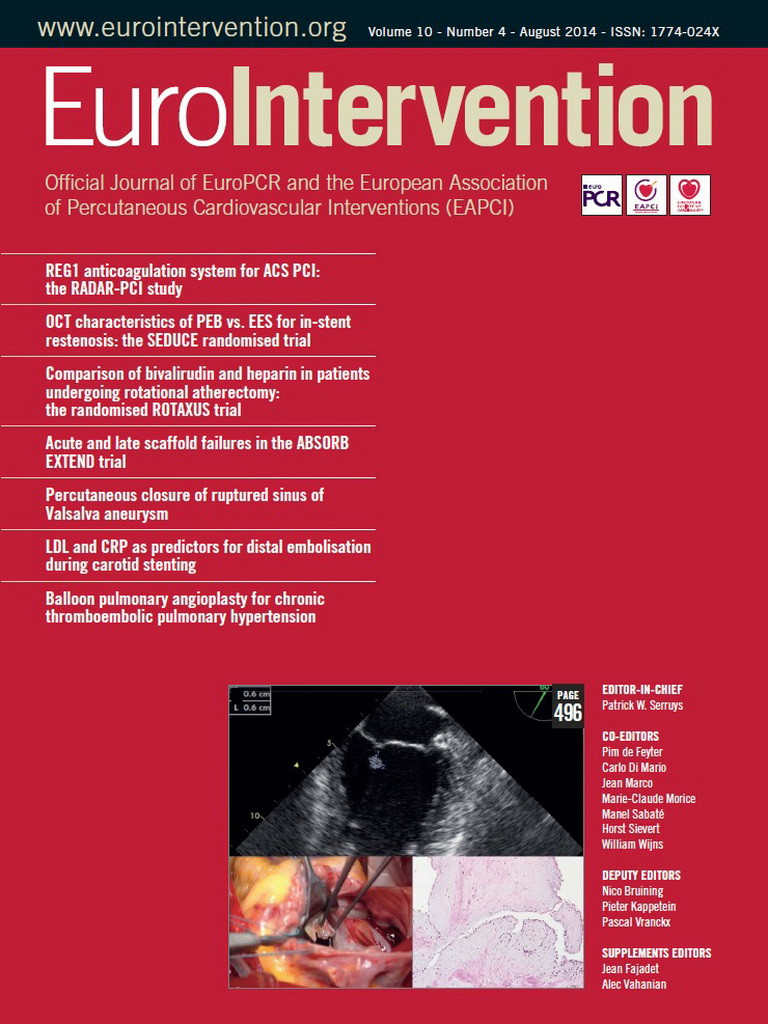We read with great interest the article by Rafie et al1, in which the authors assessed the incidence of vascular access-site-related complications (VASC) when a femoral access (FA) was attempted by interventional cardiologists predominantly using radial access (RA) in their daily practice (“radial operators”). The authors reported a disproportionately high VASC rate (12.5%) in femorally accessed patients, as compared to historical populations where FA was predominantly used (3.2-8.4%). As acknowledged by the authors, such comparison is methodologically difficult because of case mix and differences in medical treatment and interventional techniques. Rafie et al attributed the higher rate of VASC to the greater prevalence of risk factors for vascular complications in femoral patients.
This explanation seems plausible, yet it might be incomplete. Even though it was not specifically addressed, one could argue that reduced FA exposure in fellows and young interventionalists could have a detrimental effect, since operating in a predominantly radial environment might hamper their opportunity to master FA. Indeed, it has been shown that physician experience is an important determinant of outcomes for a wide range of medical conditions and procedures, especially in surgical and interventional specialties2-4.
The observations made by Rafie et al raise an interesting question: does the extensive use of RA lead to a deterioration of the specific skills required to secure an FA successfully? If so, one could then hypothesise that the benefits associated with RA at a patient level are offset, at a population level, by the greater incidence of complications seen with FA.
At our institution, where trainees secure most of the vascular accesses, we witnessed a relative increase in the unadjusted VASC rate over a ten-year period after RA was introduced. Between 1996 and 1998, 11,821 diagnostic and interventional procedures were performed exclusively through the FA: 217 VASC cases were observed (1.84%). Between 2006 and 2008, 12,540 diagnostic and interventional procedures were performed through either the FA or RA: the VASC rate was 1.40% (78/5,581) with RA, but increased to 3.59% (250/6,959) with FA (p<0.001 with both RA and FA in the 1996-1998 cohort). At a population level, overall (RA+FA) VASC rate increased to 2.62% (328/12,540), which is significantly higher than the VASC rate seen in the 1996-1998 cohort (p<0.001). At a population level, the safety benefit conferred by RA seems paradoxically to be offset by the increased incidence of VASC when FA is attempted. Both the observations by Rafie et al1 and our group seem to indicate a signal towards a decreased proficiency with FA in the “radial era”, which should be confirmed by large studies with adjusted analyses.
Despite the advances brought by RA, the femoral artery remains a fundamental access route that must be mastered by all interventional cardiologists. We think that the existence of the radial paradox should be acknowledged and taken into consideration in the educational programme for trainees and young interventional cardiologists.
Funding
L. Azzalini is funded by a grant of the Spanish Society of Cardiology. E. M. Jolicoeur is supported by research grants from the Fonds de Recherche du Québec - Santé (FRQS), The Canadian Institutes for Health Research (CIHR) and by La Fondation de l’Institut de Cardiologie de Montréal.
Conflict of interest statement
The authors have no conflicts of interest to declare.
We read with interest the comments from Azzalini et al suggesting that one previously unexplored explanation for the excess of vascular complications observed in patients undergoing PCI from the femoral artery in a radial centre could be simply “de-skilling” of radial operators in femoral puncture. Whilst accepting that trainees in the modern interventional era are less familiar with femoral artery puncture, subsequent analysis of our data confirms that the majority (>80%) of femoral punctures in our series (due to case complexity) were performed by the consultant interventionalist responsible. However, we would agree entirely that, even for experienced interventional consultants, femoral puncture is not as familiar a skill as it was in the past. However, in order to minimise vascular complications, fluoroscopic imaging pre-puncture, use of bivalirudin and femoral artery closure devices are part of routine practice at our centre. It is our belief that the overall PCI population benefits significantly in terms of vascular complications by the default use of the radial artery for access, but our data clearly show that the selected femoral cohort in a radial centre has a high rate of such complications. Every precaution (including maintaining femoral artery cannulation skills) should be taken to minimise what we now accept can be a life-threatening event.
Conflict of interest statement
The authors have no conflicts of interest to declare.

